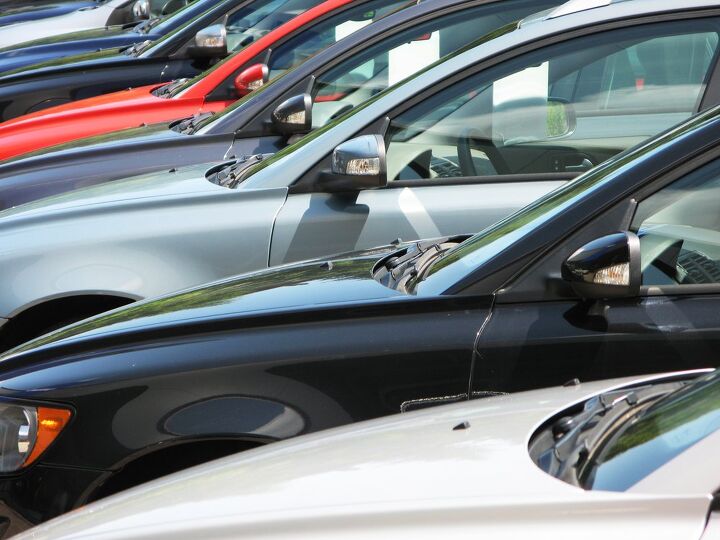Why Falling Used Car Prices Aren't the Bargain You'd Expect
In recent times, the used car market has witnessed a notable decrease in prices, presenting a double-edged sword for vehicle owners and potential buyers. Data from Edmunds' Q4 Used Vehicle Report highlights a trend that could have adverse effects for some consumers, particularly those looking to trade in their vehicles.
Downward Trend in Used Car Values
The average transaction price (ATP) for used vehicles has seen a significant drop, settling at $28,371 in the fourth quarter of 2023. This represents a 4.4 percent decrease from the previous year, indicating a stabilization in the used car market. However, this stabilization comes with its own set of challenges, especially for individuals looking to trade in their vehicles.
The Rise in Negative Equity
One of the more concerning trends is the increase in trade-ins with negative equity. In the last quarter of 2023, 20.4 percent of new vehicle sales involving a trade-in reported negative equity, marking the highest percentage in two years. This trend underscores the growing number of consumers who find themselves owing more on their auto loans than the current value of their vehicles.
Record Highs in Upside-down Loans
The financial burden on those with upside-down loans has reached new heights, with the average amount owed hitting a record $6,064 in Q4 2023. This upward trajectory in debt underscores the financial implications for consumers, especially those who purchased new vehicles during the pandemic at prices above the Manufacturer's Suggested Retail Price (MSRP).
Impact on Near-New Vehicles
Vehicles that are 1 to 2 years old are experiencing the most significant drops in value, making them particularly vulnerable to depreciation. The decrease in ATP for these newer models is stark, with 1-year-old vehicles seeing a reduction of over $6,000. This shift marks a departure from recent years when trade-ins were somewhat protected from negative equity due to high demand for used inventory.
Opportunities Amid Challenges
Despite these challenges, there remains a silver lining for those with the means to purchase used vehicles, especially in the luxury segment. The analysis of 0- to 3-year-old vehicles reveals substantial savings when compared to new models, with luxury large cars and large mainstream SUVs offering significant discounts.
A Cautious Outlook
The forecast for used vehicle prices remains uncertain, influenced by factors such as the length of time vehicles remain unsold and the variability of automaker incentive programs. These factors are likely to affect trade-in values, making it increasingly difficult for dealers and consumers to predict future trends.
This article was co-written using AI and was then heavily edited and optimized by our editorial team.
More by TTAC Staff
Latest Car Reviews
Read moreLatest Product Reviews
Read moreRecent Comments
- CanadaCraig Can you eventually go to prison for driving without a licence in the US?
- CanadaCraig To hell with the UAW.
- CanadaCraig First I'll answer the question. YES. Toyota, Mazda and Subaru are doing the right thing. That said... If only those pushing for an all EV world would care as much about the 1 BILLION earthlings that make less than $1 a day.
- Redapple2 All this BEV investment. A bigger impact (less oil consumption) would have been made if we had made PIG UP trucks smaller since 2000 and not HUGEr. (And raised gas tax by $2-3/gallon.)
- ChristianWimmer One of my clients is a company that is actually producing eFuels in Leipzig. Yes, they require a lot of energy to produce but this would not be an issue if Germany had nuclear energy or used the excess energy from wind and solar to produce these fuels. In such a scenario the energy losses wouldn’t really matter.Also, I am told that nations like Spain or the North African nations like Morocco or Tunisia could be ideal places to produce eFuels/Hydrogen due to their abundance of solar power. Again, the energy loses here would not matter since the energy used to produce these fuels is essentially “free”. If this path were pursued, Morocco and Tunisia could become wealthy nations and exporters of eFuels and Hydrogen. Countries with an abundance of solar or wind or hydro energy could be producing eFuels for their domestic consumption and export.Another argument which to me is irrelevant these days ist the poor thermal efficiency of ICE engines (25-35% gasoline, 40-45% diesel). One long trips with cruise control set to 130 km/h and even the occasional venture into the 180-200 km/h zone, my fully loaded (with my gear) A250 (2.0 4-cylinder 224-hp Turbo) can achieve an impressive gas mileage of 6 L / 100 km. That’s phenomenal - I am looking at six 1 liter bottles of water right now and that’s all my car needs to travel 100 km… amazing.So, I am a supporter of eFuels. I love internal combustion engines and if we want to use them in a climate neural way, then eFuels are a must. Also, to me every ICE car is way more sustainable and longer-lasting an an EV. Mazda, Toyota etc. are making the right move IMO.


































Comments
Join the conversation